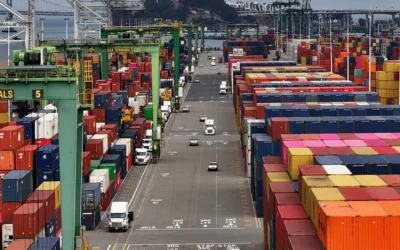The Trial Balance is CFO.com’s weekly preview of stories, stats and events to help you prepare.
Part 1 — Porsche’s role in the auto industry’s EV reset
Porsche finance leadership is currently steering through one of its toughest years as the company, and, like many of its competitors, is reversing course on its EV strategy.
After making a massive EV push, Porsche is facing weaker EV demand, higher costs and new trade pressures that have cut into profits. CFO Jochen Breckner, who replaced the former CFO earlier this year, has called 2025 a “trough year” and said in a recent press release that the company is “consciously accepting” weaker results to build long-term strength.
The strategic pullback follows years of aggressive electrification plans. A new SUV planned to be tiered above the Cayenne will now launch with combustion and plug-in hybrid engines instead of as a full battery vehicle. The Panamera and Cayenne models will stay in production with combustion and hybrid options into the 2030s. Porsche has also postponed its next electric platform and delayed several all-electric models as part of a broader realignment.
The financial hit has been tremendous. According to recent numbers reported by Porsche, group operating profit for the first nine months of 2025 fell 99% to €40 million from €4 billion a year earlier, cutting the operating margin to 0.2% from 14%. Group revenue slipped 6% to €26.86 billion as weaker Chinese demand and 15% U.S. import tariffs added pressure. Extraordinary expenses tied to the EV slowdown and restructuring will reach about €3.1 billion this year, including €1.8 billion in depreciation and provisions.
Other automakers like Ford, General Motors, Mercedes-Benz, Tesla and the Porsche ownership group’s less luxurious brand Volkswagen are facing similar pressures as EV demand cools and government incentives in the U.S. cease. Many of these companies are delaying model launches, reducing production targets and ultimately shifting investment toward hybrids, all to protect margins and meet consumer demand, a strategy BMW and Toyota have pursued from the start.
Despite those large losses, Porsche’s cash flow remains solid. Automotive net cash flow rose to €1.34 billion from €1.24 billion a year earlier, pushing the margin to 5.6%. Breckner said the performance shows Porsche’s ability to have liquidity even as earnings fall.
The company now expects 2025 revenue between €37 billion and €38 billion with an operating margin up to 2%, down from an earlier forecast of 5% to 7%. Its automotive EBITDA margin is projected at 10.5% to 12.5% compared with 14.5% to 16.5% last year.
Breckner said the focus now is on maintaining flexibility and rebuilding profitability through a balanced mix of combustion, hybrid and electric vehicles. Electrified models made up 35% of Porsche’s global deliveries and 56% in Europe through the first nine months of the year. “We expect 2025 to be the trough that precedes a noticeable improvement from 2026 onwards,” he said.
For CFOs like Breckner who are in these situations, the challenge is not only balancing capital discipline with a new strategy around innovation spending, but also communicating to investors and stakeholders that the EV slowdown and shift in decision-making is cyclical, not structural or political.
Part 2 — This week
Here’s a list of important market events slated for the week ahead. Note: Economic reports may be delayed due to the government shutdown.
Monday, Oct. 27
- Durable-goods orders, Sept.
Tuesday, Oct. 28
- S&P Case-Shiller home price index, Aug.
- Consumer confidence, Oct.
Wednesday, Oct. 29
- Advanced U.S. trade balance in goods, Sept.
- Advanced retail inventories, Sept.
- Advanced wholesale inventories, Sept.
- FOMC interest-rate decision
Thursday, Oct. 30
Friday, Oct. 31
- PCE index, Sept.
- Core PCE index, Sept.
- Chicago Business Barometer (PMI), Oct.
Part 3 — Weekly listen: General Motors CFO Paul Jacobson
On Bloomberg Talks last week, General Motors CFO Paul Jacobson said the company’s goal through supply chain shocks, tariffs and changing EV demand has been to stay resilient. “Since coming to GM in 2020, we’ve gone through COVID, we’ve gone through the chip shortage, we’ve gone through tariffs and EV pivots,” he told Bloomberg. “What we’ve really tried to do is create a model that is resilient.” Jacobson said keeping tighter control of inventory and cash flow has helped GM “react to the world around us faster” and deliver strong results in a volatile market.
Asked whether near-term volatility meant abandoning long-term plans, Jacobson said GM still sees electric vehicles as central to its future, even as it scales capacity to match softer demand. “We’ve taken a charge on reducing some of our EV capacity reflecting the demand that’s out there, but we still believe that EVs are the future,” he said.
“We think there’s an opportunity to take a little bit of a pause in demand growth, rightsize our capacity and make sure we can be successful as more customers adopt it,” he continued. His remarks highlight how finance leaders in the auto industry are adjusting EV production spending without totally giving up on the EV marketplace.
Jacobson also pointed to the cost of making GM more self-sufficient. The company has invested billions in U.S. battery materials and manufacturing while diversifying its chip and parts suppliers. “We learned a lot from COVID and a focused supply chain that was really susceptible to individualized shocks,” he said.
GM recently lowered its tariff forecast by about $500 million after U.S. officials expanded parts exemptions, and its restructured China business is now profitable each quarter. “We expect 2025 to be a transition year,” Jacobson said, “but as we look into 2026, we think there’s an opportunity to do better than we’ve done in 2025 and start to work our way back up to those 8 to 10% margins we’ve targeted.”





